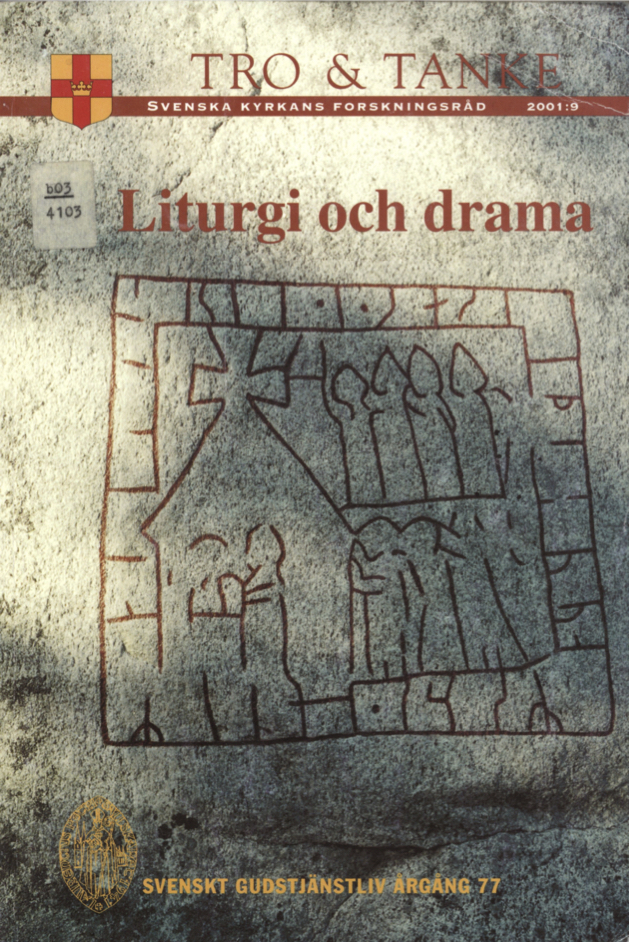Liturgisk dans - vad är det egentligen?
Abstract
What Is Liturgical Dance?
Dance with Christian motives is to be found in many different situations— on theatre stages, in churches, etcetera. The dance presented in church, in concerts, or as a service is called church dance. Sacred dance is a term used for the kind of dance which has a sacred function or a sacred motive, hut the term conveys nothing about the place or the situation where the dance is being performed. Ritual dance is dancing as a ritual act, internally or publicly.
Liturgical dance is dance within the service, dance in the service of God, dance as a service, dance as a liturgical act. It has been interesting to us to see what unites dance and service, and to build our work with liturgical dance on this investigative work.
The Place of Dance in the Service
The service is an act before God and before the altar, which is the symbol for G od’s presence in the church.
The place of dance in the service is obvious when the church room is treated as a service. The church room as a room for service is of particular importance for the dance. Spatial relations and attitudes are solid elements in all dancing. This applies both to solitary dance and to congregational dances. When dance takes its position in the room in relation to the liturgical function of the church room, it becomes a service.
How Can Dance Add to Service Life?
Dancing within the service can act as a window—an opening to spiritual experiences here and now. A kind of transparency characterises the liturgical dance as one part of service life. Dance within the service is a concrete expression that all of our being—-body, soul, and spirit— is a whole before God. God took the shape of a human being through incarnation, and dance in the service also becomes a concrete expression for this incarnation.
What Is Dance? Why Do We Dance?
Dancing is part of being human. Every human being has their own dance. Whether one sees dance being performed or one takes part oneself, one can participate. Dancing is one way of being human, expressing oneself, investigating the surrounding world, and reflecting on one’s place in the world. We have wished to see our dance as a deepening of the service and, at the same time, a way for the congregation to discover both the dance and the service in new ways.
Dancing in Church Is Being Developed
Both in church and in the dance world there is at present much greater openness for church dance. In many places people really long for dance as a way of expressing themselves.
If dancing is to have a place in the church room, then liturgical knowledge and consciousness of the church room as a room for service is needed. All kinds of dancing is possible. No genre is wrong as long as the dance is liturgically supported.
God is God for the whole human being, the church is church for the whole human being, and the service is service for the whole human being. Dance is a concrete expression for this.
Downloads
Publicerad
Nummer
Sektion
Licens
© författarna, Laurentius Petri Sällskapet för svenskt gudstjänstliv samt Artos & Norma bokförlag. Det är tillåtet att kopiera och använda material ur Svenskt Gudstjänstliv för forskningsändamål om källan anges. För övriga ändamål kontakta respektive artikelförfattare samt förlaget. Särskilda restriktioner kan gälla för bildmaterial.


